Thailand Creative and Design Center (TCDC) is the creative and design knowledge hub of Thailand. It offers a wide range of facilities and activities, including an extensive design library, materials and multimedia resource center, exhibition galleries, workshops, seminars, a retail shop and display space for special events. TCDC in cooperation with private sectors, SME entrepreneurs and designers aim to raise public awareness of using design to add value to their products along with helping Thai designers work gain visibility in the local and global marketplace.
How to go Thailand Creative and Design Center (TCDC)
Take the BTS SkyTrain Sukhumvit Line and get off at Phrom Phong Station (E5). Enter The Emporium Shopping Mall and go up to 6th floor.
Thailand Creative and Design Center (TCDC)
Address:
6th floor, The Emporium Shopping Complex
622 Sukhumvit 24, Bangkok 10110 Thailand
Opening Hours:
Tuesday to Sunday (closed on Monday)
10.30 a.m. to 9.00 p.m.
For more information:
Tel: (66) 2 664 8448
Fax: (66) 2 664 8499
Email: library@tcdc.or.th
MSN: library@tcdc.or.th
TCDC Website: http://www.tcdc.or.th
TCDC Resource Center Website: http://library.tcdc.or.th
Thailand Creative and Design Center is a division of OKMD, Office of the Prime Minister.
Thailand Creative and Design Center
Dance with your imagination and change your life. Thailand Creative and Design Center’s key focus is to create an opportunity for Thai people to access source of knowledge for their new inspirations. TCDC will provide them with an opportunity to experience and absorb of new creativities by learning from success and achievement of all famous artists and designers worldwide.
What is Design?
Society, history, politics, economics, geography and religion – all produce unique pressures on the design process. Design is not just about style and inspiration. The collective imagination of a country is conditioned by how it relates to issues as diverse as self-expression, class, landscape, war and ideology.
Through the concept of ‘genius loci’ or ‘talent of the place’ we explore how each country is disposed to certain unique talents. These talents make up the cultural ‘genius’ of the country and are the result of a conuence of forces from the physical to the spiritual. “What is design?” looks at how ten countries: England, Italy, France, Germany, US, Spain, Netherlands, Finland, Japan and Brazil have each interpreted their cultural uniqueness into 20th century industrial design classics and explores the ‘genius loci’ of industrial design in Thailand.
Japan
Tradition and innovation
Animistic, perfectionist and ingenious, with a meticulous capacity for knowledge and learning, Japan takes the world on its own terms. Its design is introspective, exploring its cultural psyche in a continual reinterpretation of its own traditions. Meanwhile, it looks outward to appropriate a world aesthetic. This intellectual dichotomy has resulted in a subtle balance of tradition and innovation.
Spain
Cultural exuberance
Emerged from decades of dictatorship and cultural oppression, the transition to democracy brought Spain a chance to embrace a new age, politically and culturally. Inspired by the heritage of Antoni Gaudi and Joan Miro, Barcelona emerged as an expression of Spain’s cultural renaissance and economic regeneration.
France
In pursuit of style
Ever since Louis XIV dazzled Europe with the opulence of Versailles, France has been an emblem of luxury exquisite taste and high life. This obsession with style and refinement in daily life transformed traditional ateliers of handcrafted goods into modern premium designer brands, a major source of France’s national income.
Italy
Happiness in daily life
The Italian quest for happiness in daily life emerged as a global design influence. Combining an understanding of the industrial production methods in use during WWII with contemporary ideas about life and living, the Italian sense of everyday enjoyment was brought to new materials and technologies, appealing to international consumer elite.
United Kingdom
Class and creative imperialism
It is ironic that as the British Empire declined, its creativity began to rule the world, especially in fashion, music and industrial design. Rooted in the enduring influence of the class system, British modern design has a unique ability to tap into social dialectics. Witty and quietly subversive, irony is a recurrent device in British creative culture.
Netherlands
Contradictory histories
Dutch history is marked by profound contradictions. The free trade values and religious temperance of the bourgeois forefathers continue to influence Dutch creativity. Contradiction remains key in contemporary Dutch design, reconciling the old with the new, the mass produced with the bespoke.
United States of America
The American Dream
Based on frontier optimism, and a belief that wealth creates happiness, the American Dream has been a potent force in America design. In the pursuit of profit, American merchant adventures exploited opportunity with ruthless design.
Germany
Power of the folk
On influential theme in 20th century German thought is its search for inspiration in the prehistoric folk past and the pristine origins of its peoples. The Bauhaus School of Art and Design and the German Volk (‘people’) were a response to the country’s defeat in WWI, and her loss of status as the central power of Europe.
Finland
Design for the many
Finnish imagination is driven by collective survival in a land of extreme landscapes. Thrift, practicality, skill and resilience – the communal values of its traditional hunting and fishing lifestyle – inspire the design basis. Expressing sensitivity to the environment and an affinity with nature, contemporary Finnish design sees itself as a tool for the many, rather than as luxury for the privileged few.
Brazil
Beneath the rainforest
Dominated by the Amazon, Brazil is a wild mix of abundant natural species and ethnic groups. Brazilian design emerges from an intersection of clashing cultures, textures, rituals and beliefs. This has infused Brazilian design with a unique vitality.
Design Masterpieces
Charm from Favelas
Favela chair (1991) and Anemone chair (2001) – Fernando and Humberto Campana, Edra


The Campana brothers have won worldwide attention for designs that combine a creative use of common, often found materials, and themes derived from Brazilian street culture, especially that of Rio’s notorious favelas. Fernando and Humberto Campana look at ordinary objects from a perspective that qualities as ‘outside the box.’ The may substitute strips of rubber and plastic for cloth, and scraps of wood for leather, for instance, without regard for technological considerations. What the brothers make depends primarily on the material to be used and reflect an esthetic that some people have termed ‘naive’.
Adult doll
Barbie (1959) – Ruth Handler
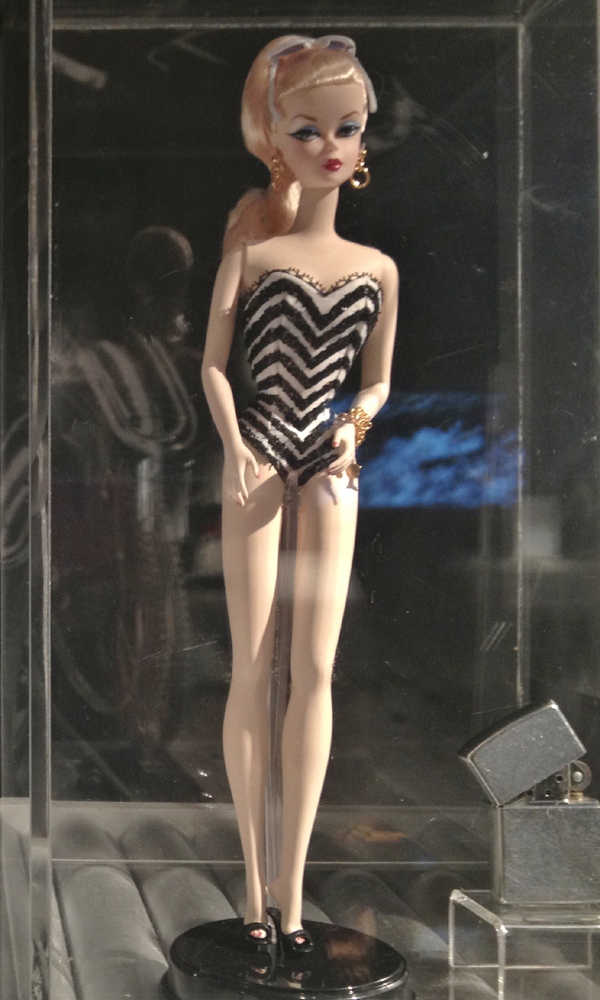
Barbie, the famous blond doll in her black-and-white striped bathing suit, was an instant success when it first hit toy stores, with some 315,000 dolls sold in the first year of production. Founder Ruth Handler introduced the first Barbie at ‘the American Toy Fair’ in 1959. Inspired by Lilli, a German cartoon character created in 1952, Handler got the idea for the now-iconic doll from watching her daughter playing with paper dolls. She recognized the potential for an ‘adult’ doll since the only other dolls on the market at the time were infants or small children. Barbie had life-like arms, legs and nect that could move, and came with a wide range of clothes and accessories that kept the doll in step with the times. Over the past 50 years, Barbie has come to represent American girls’ conception of the perfect figure.
Trunks of extravagance
Travel trunks – Louis Vuitton (1854)
Known for its extravagant functions, the Louis Vuitton Trunk captures the French talent for communicating lifestyle through design. Vuitton created the first stackable, airtight, at-topped trunks in 1854, when he opened his new shop in Paris. As most trunks before – they could not be easily stacked for travel. Vuitton’s very first design, a gray Trianon canvas at trunk, was purchased that year by the French Empress Eugenie, for a steamship. France’s expanding colonial empire in the late 19th century made leisure travel fashionable. The Vuitton trunk became the means of practical luxury while journeying amongst the colonies. In 1876, Vuitton created the wardrobe trunk, with a clothes rail and small drawers. In 1878, he transformed it into a fold-out bed, for a French explorer. In 1880, he introduced a five-number combination lock for the trunk, a unique innovation at the time.
Grandma’s underwear?
Gaultier bustier (late 1980s) – Jean Paul Gaultier

When Madonna commissioned Jean Paul Gaultier to design costumes for her ‘Blonde Ambition’ world tour, Gaultier took inspiration from his grandmother’s corset. He reinvented it as Madonna’s unforgettable pointed basque and bra, resulting in one of his most talked-about contributions to modern couture. Turning underwear into outerwear, Gaultier challenged traditional boundaries between the private and the public. His approach was quintessentially French – all in the name of style. Marked by fantasy, surrealism and personal experimentation, Gaultier’s audacious, outrageous clothes transcend traditional boundaries of gender and style.
Apes rocks
Hoodies – Tomoaki ‘Nigo’ Nagao, Bathing Ape (1993)
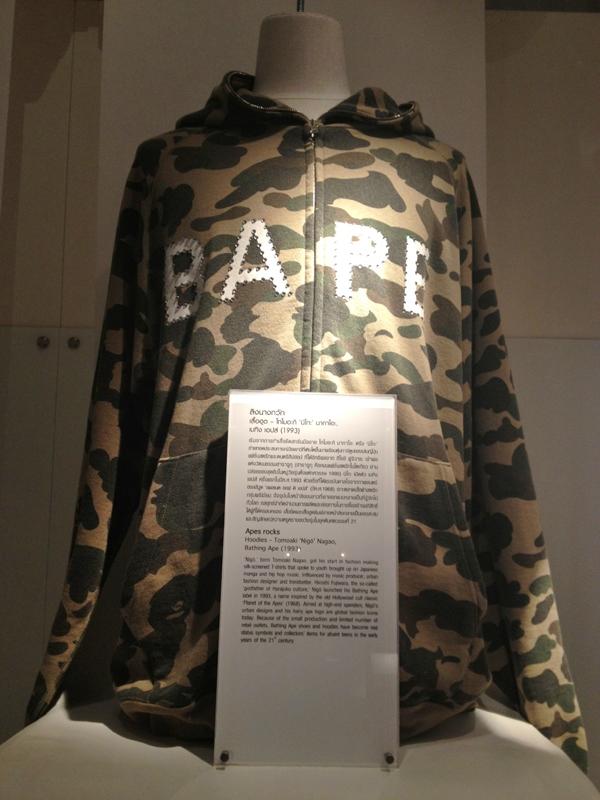
‘Nigo,’ born Tomoaki Nagao, got his start in fashion making silk-screened T-shirts that spoke to youth brought up on Japanese manga and hip hop music. Influenced by music producer, urban fashion designer and trendsetter, Hiroshi Fujiwara, the so-called ‘godfather of Harajuku culture’, Nigo launched his Bathing Ape label in 1993, a name inspired bu the old Hollywood cult classic ‘Planet of the Apes’ (1968). Aimed at high-end spenders. Nigo’s urban designs and his hairy ape logo are global fashion icons today. Because of the small production and limited number of retail outlets, Bathing Ape shoes and hoodies have become real status symbold and collectors’ items for a fuent teen in the early years of the 21st century.
Farmer shoes go global
Pelotas shoes (1975) – Camper
Rich in local character, Camper shoes are inspired by farmers’ footwear from the Spanish island of Mallorca and the rural environment of the Mediterranean. In this part of the world, ‘camper’ means ‘peasant’ and this family business (created in 1975, the year of Franco’s death) is – above all else – about a sense of a place. Daring in its use of colour, Pelotas, a classic unisex Camper style, was inspired by the stitching on footballs and resembles a retro soccer boot. It was named after the characteristic rubber balls that make up the sole
Can we help the world through design?
PVC Bag – Demano (1999)
This eco-friendly bag is the brainchild of three Colombian friends with a love for the posters advertising art exhibits and other cultural happenings around their adopted city of Barcelona. While the posters were attractive, the three transplants regretted the fact they were simply discarded after a single use. That is how Eleonora Para Chini, Marcola Manrique and Lilianan Andrade, living in Barcelona since 1998, came up with the idea of turning these posters, made from highly flexible, waterproof PVC plastic into trendy bags and other fashion items.

Italy
Happiness in daily life
The Italian quest for happiness in daily life emerged as a global design inuence in the 1950s.
It combines an understanding of the industrial production methods in use during WWII with contemporary ideas about life and living formulated by forward-looking philosophers and designers. Italy became known as a leader in modern industrial design, creating such classics as Corradino D’Ascanio’s Vespa, Olivetti’s Lettera 22 typewriter, Castiglione’s Arco floor lamp and Fiat’s Cinquecento. Italian manufacturers brought the Italian sense of everyday enjoyment to new materials and technologies, appealing to a new international consumer elite.
Roman holiday
Vespa (1946) – Corradino D’Ascanio, Piaggio

Plaggio, Vespa’s manufacturer, originally made warplanes. Under Allied agreements, at the end of WWII, the company was no longer allowed to manufacture aircraft. Enrico Piaggio decided to create a stylish scooter that was fast and easy to use – a modern design for the masses. Corradino D’Ascanio who designed the first modern helicopter created a friendly curved metal body-shell which turned Vespa into an icon of everyday Italian style, and an expression of freedom after years of fascist oppression.
Freedom on a T-shirt
Printed T-Shirt (1990) – Cisto and David Dalmau, Custo Barcelona

After their motorcycle journey around the world in the early 1980s, the brother Custo and David Dalmau returned to Barcelona and used T-shirts as a canvas on which to express the freedom of post-Franco Spain. Distinct, original and innovative, Custo Barcelona’s printed T-shirts combined unashamedly bright colours, intense graphics and intricate details using embroidery, foil and metal. The amboyance captured the renewed vitality and exuberance of the period, essentially rejecting the Mediterranean habit of wearing black.
How did this suit survive so long?
Chanel suit – CoCo Chanel, Chanel (1930s)

Inspired by menswear, the Chanel suit symbolised the birth of modern clothes for women, With its practical jersey dress and knee-length skirt with collarless jacket, Coco Chanel’s most famous creation, the Chanel suit, redened couture for French women in the early 20th century. Parisian fashion in the mid-1920s began expressing the new phenomenon of women entering a variety or careers. Ease and simplicity became important valuesin the wardrobe. Chanel reworked the Parisian sense of femininity and sophistication into a modern simplicity.
Fashion from the war trenches
Burberry trench coat – Burberry (1920s)
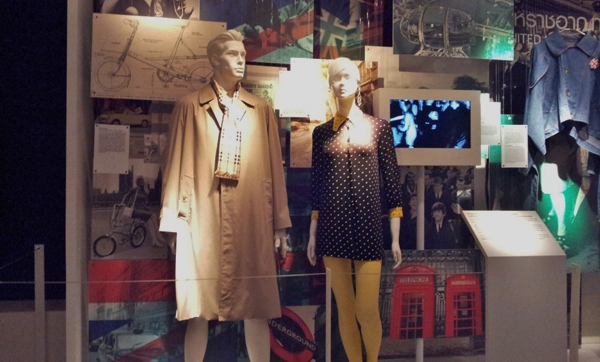
Thomas Burberry invented a way of treating cotton to make it strong, waterproof, lightweight, and impervious to heat and cold. He patented this ‘gabardine’ cloth in 1879, and used it for his famous Burberry raincoat. During WWI, the Burberry raincoat was redesigned for military use, with epaulets (to carry insignia) and metal D-rings on the belt (to carry military accoutremen ts). It was dubbed the ‘trench coat’ by soldiers in the trenches. The distinctive check pattern now associated with Burberry was first used as a lining for its trench coat in 1924. Since then, Burberry has become one of the most recognisable symbols of British tradition.
Turning trash into treasure
Giraffe bookshelf (2007) – Singh Intrachooto, Osisu

At first glance all you will probably notice about this bookshelf is the clever, playful design. But if you look closer, you will see that it is really a whole lot more. This giraffe bookshelf is a reflection of the designer’s commitment to giving value to things we normally think of as worthless. Angled so that books won’t fall off the shelves, it is made from recycled packaging materials like the kind used to wrap candy and instant noodles. Osisu was founded by Singh Intrachooto and Weeranuch Tanchukiat right in Bangkok, a city that churns out over 10,000 tons of garbage every single day! The company’s founders are determined to explore the creative possibilities of waste products like milk cartons, wood scraps and printed matter. They are developing technologies for turning each of these materials into original products that are sturdy and also environmentally-friendly.
Instant Fashion
Clothing collection – Zara (1975)
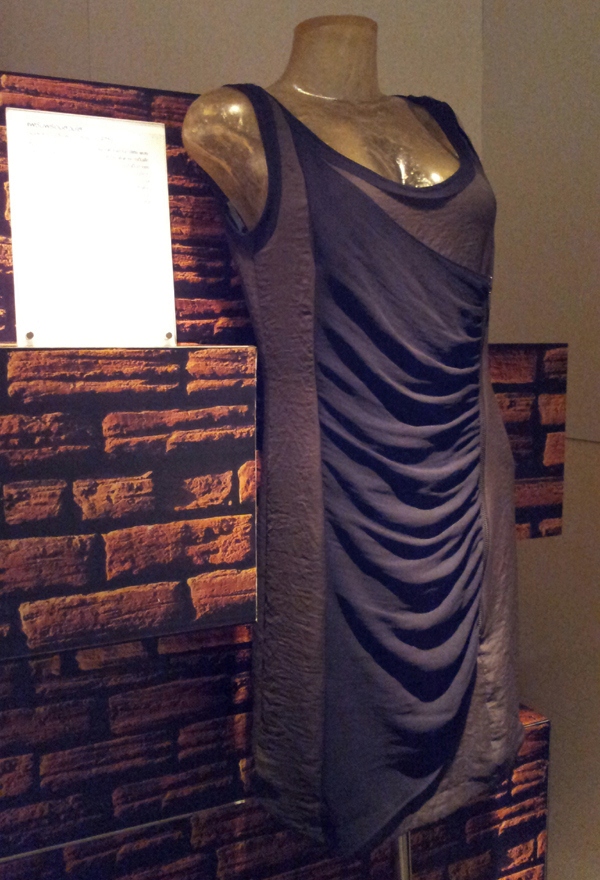
A native of La Coruna, a port city and textile center in the Galicia region of northern Spain since the 16th century, Amancio Ortega got his start in fashion as a delivery boy in a clothing factory, gradually working his way up to become the owner of a textile mill, Inditex. In 1975, Ortega launched his own brand of clothing, Zara, a brand which revolutionized the fashion industry, with new collections hitting stores once every two weeks, rather than the usual six months. Ortega took a hands-on approach to the business, personally overseeing production and his team of designers. His rationale was that by reducing the role of middlemen, he could keep costs low and produce clothes that everyone could afford. In the 1990s, Zara opened stores all around the world, and Ortega’s personal fortune ranks among the world’s ten richest people in 2009.
The Shop @ TCDC
Creative Shoes
I found a Brush shoe at The Shop @ TCDC. Brush the floor as you walk. It is something that you can just wear around the house, and the brushes will sweep up wherever you happen to go. Very creative.



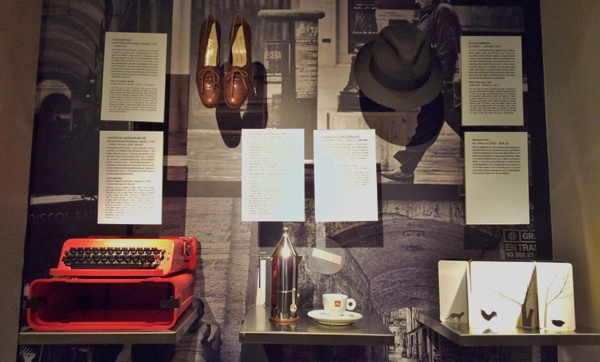

 Contact
Contact